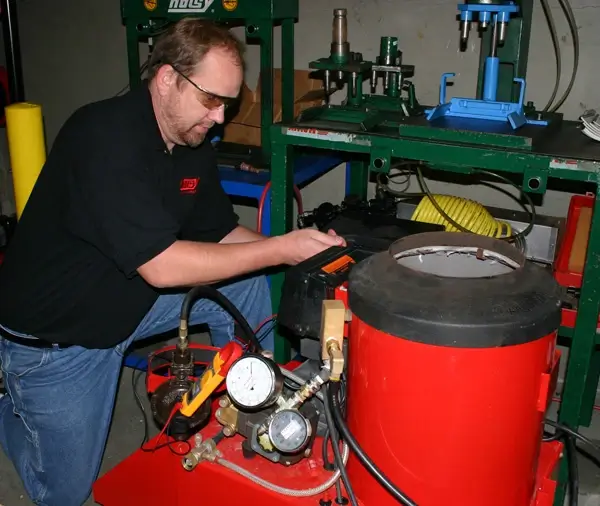Blog
Can you repair a pressure washer pump?

The Ultimate Guide to Pressure Washer Pump Repair
Have you ever been in a situation where you’re cleaning your patio to enjoy some sunny days, and suddenly, the pressure washer pump gives out? It’s a common issue that many of us have faced. It can be frustrating when equipment malfunctions, especially when you’re in the middle of a task. But don’t worry! Let’s explore the world of pressure washer pump repair together. As your go-to provider of top-quality pressure washers, Hotsy Water Blast guides you through common issues, maintenance tips, and knowing when it’s time to call in the professionals.
How do I know if my pressure washer pump is bad?
Being able to identify the signs of a pressure washer pump that is starting to fail is a crucial skill for anyone who wants to keep their equipment running smoothly. Without a properly functioning pump, your pressure washer will not be able to generate the pressure needed to clean effectively. Therefore, it is important to keep an eye out for any warning signs that indicate your pump may be in trouble. These could include:
- Loss of Pressure: If you notice a decrease in the pressure output of your pressure washer, it may be an indication of underlying pump issues. It is important to investigate and resolve such problems as they can lead to inefficient cleaning and potential damage to the washer.
- Unusual Noises: Unusual noises from the pump, such as grinding, whining, or knocking, are signs that something is wrong and needs to be addressed immediately. Such noises may indicate that the pump is malfunctioning or experiencing some sort of mechanical failure. Ignoring these warning signs could lead to more serious problems down the road.
- Leaks: Visible leaks or drops in fluid levels could indicate a problem with the pump’s seals or valves. These leaks and drops can be an early warning sign that the pump’s performance is deteriorating, and it’s important to address them promptly to avoid more significant problems.
What is the most common cause of a pressure washer going faulty?
One of the leading causes of pressure washer pump failure is poor maintenance or neglect. It is essential to perform regular maintenance tasks such as changing the oil, inspecting seals, and keeping the pump clean. Neglecting these routine tasks can result in premature wear and tear of the pump, leading to its failure. Over time, dirt and debris can accumulate on the pump, causing blockages and reducing its efficiency. Inspecting the seals is also important as worn-out seals can cause pressurized water to leak out. By practicing proper maintenance, you can prolong the life of your pressure washer and avoid costly repairs.
Can a pump on a pressure washer be fixed?
In most cases, a pressure washer pump can be fixed instead of having to buy a new one. Common issues that may arise with a pressure washer pump include worn-out seals, damaged valves, or clogged inlet screens. Fortunately, these problems can often be addressed through repairs, saving you the cost of purchasing a new pump.
Is it worth rebuilding a pressure washer pump?
When it comes to deciding whether to rebuild your pressure washer pump, there are several factors you should consider. Firstly, you need to assess the extent of the damage that has been done to the pump. If the damage is minor, rebuilding the pump can be a great option to get it back up and running again. Secondly, the age of the pump is also an important factor to consider. If the pump is relatively new, it may be worth investing in replacement parts rather than buying a new pump altogether. Lastly, you need to weigh up the cost of replacement parts against the cost of a new pump. If the replacement parts are expensive, it may make more sense to buy a new pump instead. However, if you have a high-quality pump that is used in an industrial setting, rebuilding it can be a cost-effective and efficient solution.
Practical Tips for Maintenance
Proper maintenance is key to extending the lifespan of your pressure washer pump and ensuring optimal performance. Here are some practical tips:
- Regular Inspections: Check for leaks, unusual noises, and visible signs of wear and tear.
- Change the Oil: Follow the manufacturer’s recommendations for oil changes to keep the pump lubricated and functioning smoothly.
- Keep it Clean: Remove debris and buildup from the pump regularly to prevent clogs and damage.
When should you call a professional?
While DIY repairs are possible for some pump issues, there are times when it’s best to leave it to the experts:
- Complex Repairs: If the issue involves internal components or requires specialized tools, it’s best to enlist the help of a professional technician.
- Safety Concerns: Working with high-pressure equipment can be dangerous. If you’re unsure or uncomfortable with the repair process, seeking professional assistance is safer.
- Warranty Coverage: Attempting repairs yourself could void any existing warranties on your pressure washer. Professional repairs ensure your warranty remains intact.
Safety First
When performing maintenance or repairs on your pressure washer pump, always prioritize safety:
- Wear Protective Gear: Safety goggles, gloves, and sturdy footwear are essential when working with pressure washers.
- Relieve Pressure: Before servicing the pump, release any built-up pressure by triggering the gun and allowing water to flow until it stops.
- Follow Manufacturer Guidelines: Refer to the owner’s manual for specific maintenance instructions and safety precautions.
At Hotsy Water Blast, our goal is to offer high-quality pressure washers and exceptional customer service to our customers throughout Canada. If you have any inquiries or require assistance with your pressure washer pump repair or replacement, please don’t hesitate to contact us. Our top priorities are your satisfaction and safety. We’re located in Edmonton, Calgary, Lethbridge, Red Deer, Grande Prairie, Langley, Regina, Williston, Bismarck, and North Dakota.
